Special for the Armenian Weekly April 2014 magazine
It began in Yerevan, while I was photographing the National Geographic story on Armenia that was published in 2005.
“Sandra, there are a lotta bones still out there in the desert in Syria. You have to see it, jan!” When Hirair Hovnanian told me this in 2004, I could not stop thinking about it.
I knew about the Armenian Genocide, of course, but as a third generation Armenian American (on my father’s side), my grandparents didn’t want us to think about these terrible things.
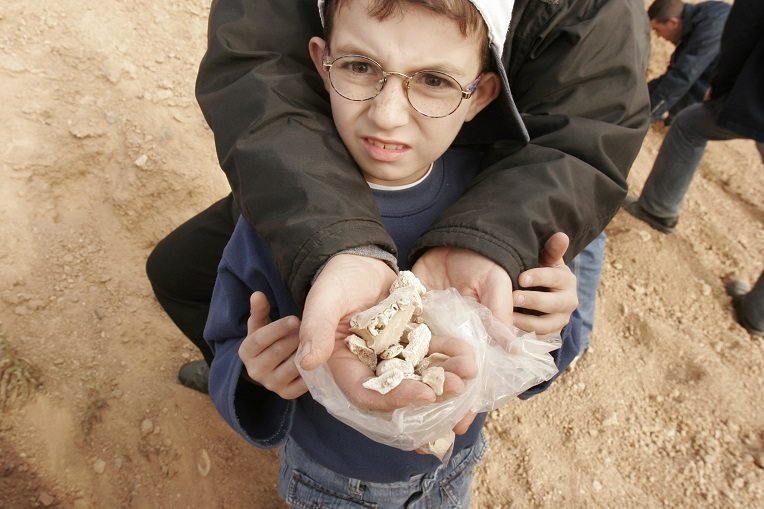
They wanted us to be truly American, free of the sorrows of the old country, like many Americans who have fled starvation, war, genocide, dictatorship, and economic insecurity from all over the world.
I decided to go to Syria on the 90th anniversary of the Armenian Genocide and find those bones. I secured a grant from the Hirair and Anna Hovnanian Foundation, which specializes in furthering education and culture, and that was enough for me to pull off my mission.
I was hoping the photos I brought back would—besides being evidence—encourage the Armenian church in Syria to try and buy the Armenian mass grave land of Ras al-Ain from the Syrian Waqf (Islamic Trust), in order to protect it from total destruction. The erasure and/or denial of physical remains and documented history is a continuation and final act in genocide.
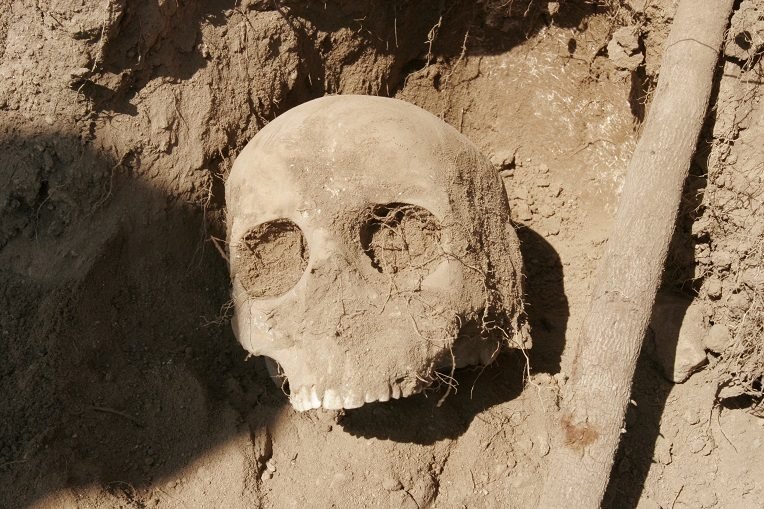
I had to plan with the utmost care. In 2005, it was dangerous to go poking around the subject of the Armenian Genocide in Bashar al Assad’s Syria. Turkish investment in the country was roaring along. I was warned by a high-level Armenian church official and a Syrian diplomat: Do not tell anybody what you are doing.
The cleric said, “Be careful. You are too late—under Hafez al Assad it would have been ok.”
The high-ranking Syrian diplomat who gave me my visa said, “Go, go and do your job. My family always spoke of what happened to the Armenians. But you must never tell anyone what you are doing. Simply say you are there to photograph Armenian culture. Do not check in with the authorities.”
Syria has a proud record of having helped the Armenian refugees during and after the genocide. Syrian Armenians have thrived and their culture was embraced in Syria. Syrians know well what happened to the Armenians in 1915, on their land, a part of the Ottoman Empire back then.
But the genocide sites at the time of my 2005 trip were being compromised: A waterworks project complete with bulldozers was atop the Marghedah grave; Shadadeh was closed off as it is in an oil field. The mass grave at Ras al-Ain was being demolished by farmers.
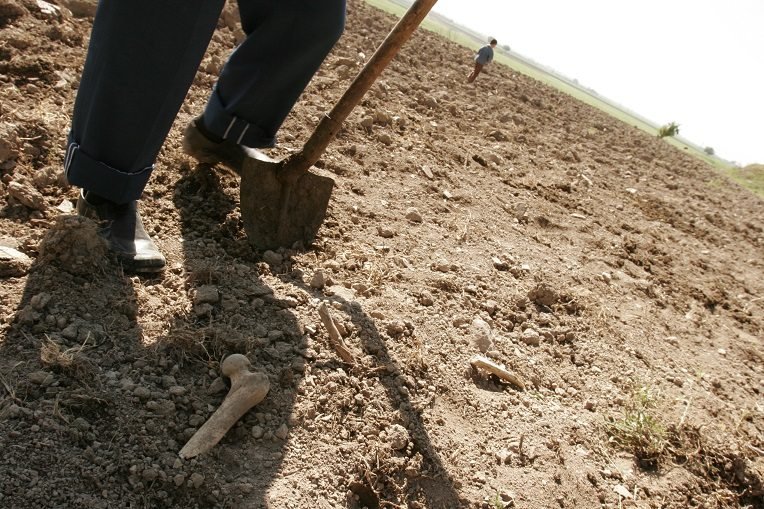
So it was a distinguished Armenian-American couple, a top Syrian diplomat, two Armenian Genocide scholars (one in Washington, one in Syria), an Armenian driver, and a local church member who helped to make these pictures happen. (Names withheld to protect sources.)
Unlike forensic archaeologist Dr. Roxana Fellini’s experience in 2007 (read her article here), which was a crucial part of an official archaeological dig approved by the Syrian authorities in Ras al-Ain/Tell Fakhariyah, in 2005 mine was not—and it got spooky. And the last thing I wanted was to put anyone in danger.
In Aleppo, Der Zor, and Margadeh, there were a lot of other people around. How could a woman in a church with a camera be a threat?
But as we took off in a battered old car north along Rt. 7, where there are mass gravesites along the old path of the Khaibur River, we took even greater care.
In Ras al-Ain, we stayed in the back room of an Armenian home as people started coming by to see who I was. “She is a Canadian Armenian looking for family roots,” the head of the family told them.
I photographed the mass graves at Tell Fakhariyah at the edge of Ras al-Ain when the coast was clear. I had to work quickly.
Government agents began to question anybody I visited after we left, even an old Kurdish grandmother who had an Armenian Genocide survivor father. One of her grandsons carried an Armenian first name.

At the time I photographed the Ras al-Ain site, the mass grave area was rented to local farmers by the Syrian Wakf (Islamic Trust), adjacent to a Muslim graveyard.
The people in this region of Syria would not eat the produce grown on the mass grave and had to sell it far afield.
The farmers crushed skulls and tossed bones aside every time they worked the land. There was no protection for this neglected and holy place. An Armenian church member tried his best to keep track of the goings-on at the mass grave. He had been beaten there several times.

The sight of so many bones in Syria going unprotected: so sad. There were little children’s molars. The bones there were mostly of women and children, as most healthy males were already killed.
After we returned to Aleppo, we shopped in the souk and photographed a genocide memorial, but I made plans to fly immediately to Paris from Aleppo—and not through Damascus, as originally planned. I got my pictures out and they remain an important document of the Armenian Genocide, especially the under-documented sight of Ras al-Ain/Tell Fakhariyah.
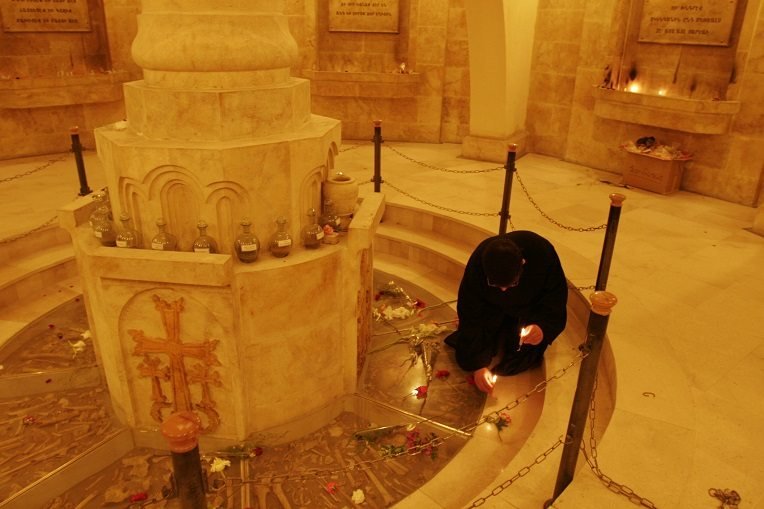
In 2010, I was in Syria again for an unrelated cultural story.
At that time I heard from a trusted source that Syria had given its original official, contemporaneous documents on the genocide to Turkey. The Turks maintained that since Syria was under Ottoman control in 1915, that the documents belonged to Turkey.
Syria and Turkey are on bad terms at the moment due to their respective positions on the civil war.
During this war, the town of Shaddadeh and its oil field containing an Armenian mass grave have been taken over by Al Nusra Front, Islamic rebels.
The Memorial Church in Der Zor has been blasted and nearly destroyed, and the Armenian Syrians have suffered along with their Syrian countrymen, in Aleppo and elsewhere in the country.

Ras al-Ain and the area around it has changed hands numerous times—in fierce battles between the Syrian-Kurdish rebels, the radical Islamist forces, the split Free Syrian Army. It’s a traditionally Kurdish region, and Kurdish forces are reportedly in control of Ras al-Ain now.
Dr. Fellini received good news that Tell Fakhariyah is being safely guarded, and that there is no damage to the dig site. I hope she will be able to finish her amazing work there in the future.
But what of the future for the human beings in Syria who cannot get out, when one force dislodges another on a regular basis?
It happened again in March: in the historically Armenian town of Kessab, when Al-Nusra Front forced Armenians to flee.
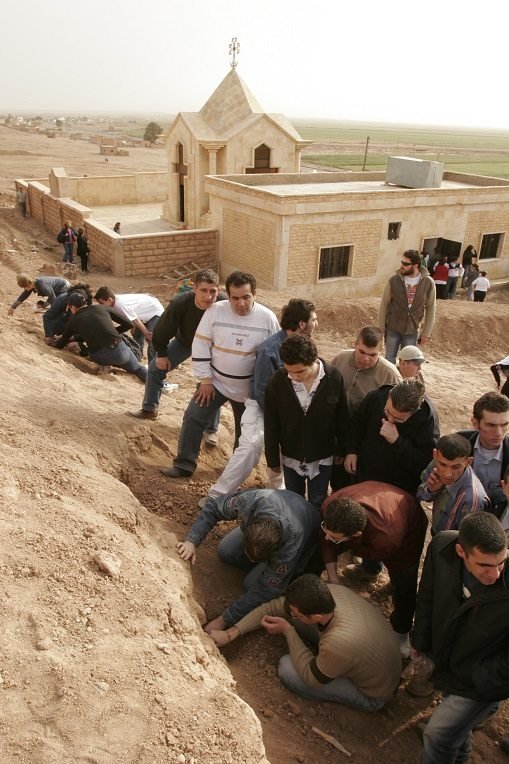
What of the other Armenian Genocide sites that are in regions like Der Zor and Margadeh? Is this key physical evidence of the Armenian Genocide—the Syrian mass graves—further eroding now?
Here are some of the photos I took on that short journey, on the occasion of the 90th anniversary of the Armenian Genocide.
For more information, please visit: www.alexandraavakian.com.
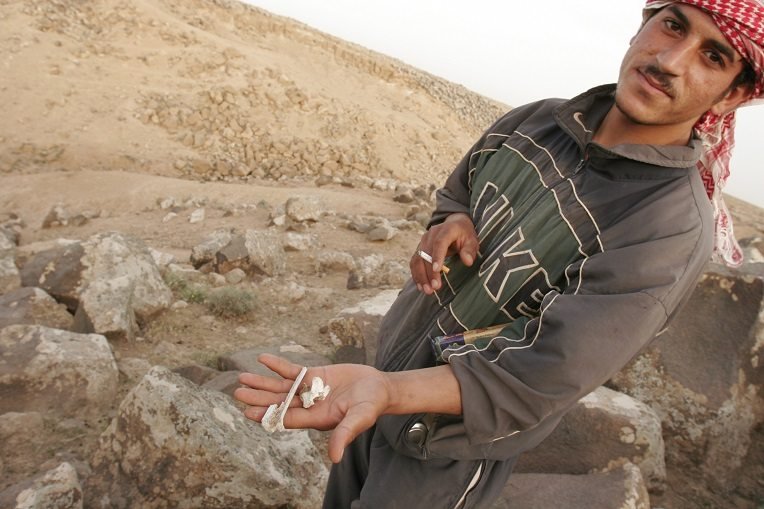
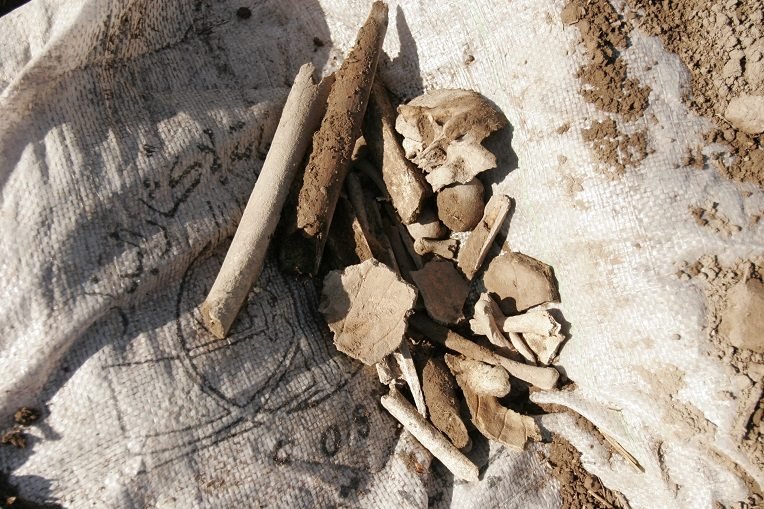
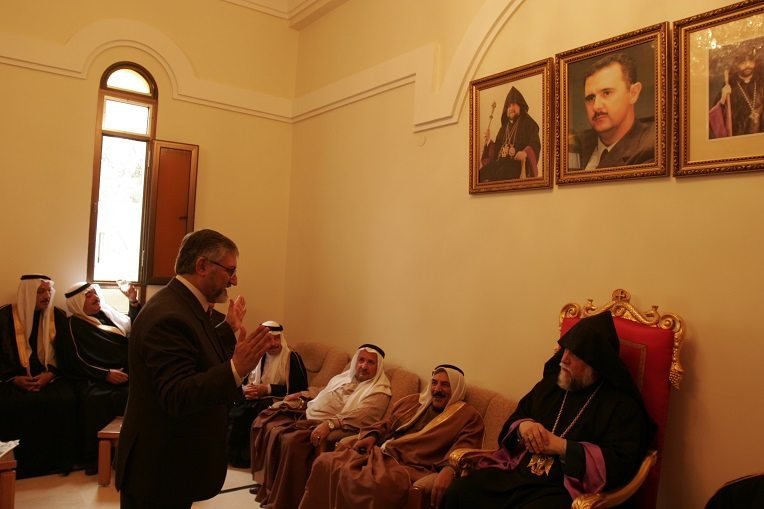


We must receive due justice from the current Turkish governmemt for the past crimes perpitrated by the Ottoman regime. Reparations of properties, lands and monies must be forthcoming NOW! Regards, Movses and Anna Movsesian, Plymouth, Mi
I’m sorry to say that your argument totally sounds illogical. You want “past mistakes of Ottoman Empire” to be compensated by “New government”. I’m sure that you are not willing to pay anything for what your ancestors did. If you want to create a national identity which bases on “national symbols”, you have to find another way or another thing rather than such stories. Because what had happened before 1915 is quite grieved and sad not only for Armenia but also for Turkey because their ancestors were also killed by the Armenians. Read the following arguments which was written by the Armenians in the comments and you are going to understand that they (even perhaps you) only care about prosperities, money and the other things but not about “universal peace and reciprosal collaboration”. As a person who’s half Armenian and Turkish, me, I can say that I’m not going to pay anything just because my parents became the survived-side of 1915 conflicts. If Armenia really aims to solve the problem, has to take a step into issue from another aspect. Getting a lesson from history, not to repeat it and trying to build another strategies which are beneficiary for both countries would be useful for all.
My paternal grandfathers house is now a bed and breakfast in Gazintep owned by an American and his Turkish wife. I would like and so would his numerous grandchildren have it back or at least monetary comensation. Why should Turks make money on the backs of dead Armenians.? The jewish people got compensation, so did the Japenese during World War II, why not the Armenians.?
Money money money… My ancestors left all their posessions behind while escaping with their lives. Some did not. Never occurred to me to ask for compensation from anyone. Build a better future and let the dead be.
Your nomadic ancestors left their possessions – yurts, flocks of white and black sheep, in East and Central Asia – and invaded the sedentary civilizations due West. Nobody invited nomadic Turks to come and steal all that belonged to others, after they murdered the owners.
How typical of a denialist Turk to advise the descendents of the victims of the AG to forget their 2 million (1895-1923) murdered ancestors.
Turks themselves, of course, insist that their murdered kin be compensated – Money, money, money.
Turks of course did not “let the dead be” and insisted Israel pay up.
Israel finally agreed to pay $20 million for the 10 murdered Turks, but Turkey wants $30 million – Money, money, money.
btw: according to my math, that’s $2 million per murdered Turk.
If we take that as a benchmark, then:
$2,000,000 x 2,000,000 = $4,000,000,000,000.
I think that’s called $4 Trillion, but not sure: I am not very good with numbers.
Of course that does not include the value of all the gold, real estate, farms, businesses, etc your Turk ancestors stole from Armenians, Uyguroğlu nomad.
In other words, forget about the heinous crime committed against the nation, don’t ask for an apology and retribution for it from the perpetrator. Right, Murat? Is this the acumen of Turkish mentality? Better future can be built when we know that your nation has repented for the crime. And the dead, by the way, did not just die of natural causes. They were barbarously killed by your predecessors.
I am glad to say I live in California where a joint resolution was passed by both houses of the state legislature to recognize the Armenian Genocide. There is a saying in America “As California goes, so goes the country.” So this could be the beginning of the US finally seeing what happened in 1915 for what it really was… I remember visiting Turkey on business in 1977 and while I was treated well, it was not a very happy place. Only recently have I studied the Armenian slaughter by the Turks or I would have had a very different feeling about Turks back then. I was raised to treat others as you would want to be treated but the official denial of the genocide by Turkey really irks me. As I read more and more about Turkey and the Ottomans it is as though treachery and duplicity is almost a part of their genetic make-up. I know there are some brave Turks who have admitted to the facts and are under great distress for this by their countrymen. They sow the seeds of truth and maybe, just maybe, their efforts will turn the tide. But with the likes of Erdogan in power, I’m not holding my breath.
Does the slaughter of millions of native Americans by the Europeans or the genocide in Iraq by the U.S forces also irk and make you sick in the stomach?? Who are the U.S to judge the Turks and the events that resulted in WW1 in Turkey?? If you go before 1915 to 1860 you will soon realise what the Russians got up to..Russian backed Armenians and the denial of the Turkic Peoples..the Turks always stand out but the genocide carried out by Europeans against the non white peoples are always shrouded in secrecy and cover ups.
Very interesting, but how can we know that those bones belong to Armenians? Have they been studied by geneticists?
Dear fellow Turks,
I used to think that the Armenian genocide claims were not true simply because I believed that killing innocent people is unacceptable, so my ancestors would not have done such a horrible thing. As political events unfold in Turkey in the past decade or so, I’ve come to realize that morality is not a constant and unshakable thing in our minds and body. It changes, and it changes without us realizing it. After listening to Armenians and Turks in the past several years, I don’t have the same thoughts anymore. Millions of Armenians disappeared from Anatolia. How did it happen? I think the answer starts with the letter
“G”. If you think that atrocities such as genocide is something Turks would never do, I urge you to read/watch Stanley Milgram’s famous experiment on human obedience. Also, check out Salamon Ash’s experiment on group conformity. We are all humans, and we are all susceptible to the same frailties. Don’t assume that you are of a higher moral value or humanly status. We can all fail, and our fathers failed badly. All we have to do is to make sure that such atrocities never happen again. It does not matter who the perpetrator is or who the victims are. A right is a right, regardless of who owns it. No one can deny another human being the right to live or right to own property just because of their identity. Also, cruelties and atrocities committed against Turks and other Muslims in the Balkans, Crimea, or somewhere else do not justify crimes against other people in your own territory.
I have a few suggestions for the Armenians. I don’t blame you for demanding financial compensation for losses of lives, however, I find such demands unrealistic. They are unrealistic because it is financially and technically impossible to fulfill these expectations. But at least, Turks can return former Armenian properties and possessions to their real owners and give Turkish citizenship to the descendants of Ottoman Armenians living in different countries across the world. Also, I recommend Armenians to appeal to the conscience of Turks rather than their minds. We, the Turks, can sometimes be hard-headed and difficult to reason with, but we are usually soft-hearted. Try to convince Turks that your fathers have been victims of genocide by targeting their hearts. Don’t give them hard statistics and tell your ancestors’ stories. Stalin says one death is a tragedy, one million deaths is statistics. I believe telling human stories would be more effective than simply blaming them. Not all of the Turks will believe you, but more of us will believe you than otherwise. Finally, Turkey is going through a political and social crisis. Don’t expect much from the Turkish people for now. But we will get back to normal sometime. Until then, keep calm, and take care.
First thanks to the excellent photo journalism by Alexandra Avakian which documents the Armenian Genocide in Syria in 1915.
Just as Hitler’s Nazi German Armies exterminated 6 million Jews during WW2, the dictators in the Turkish Ottoman Empire systematic brutally murdered 2 million Armenian, Greek and Syria
Christians over a 30 year period from 1894 to 1924. An Ottoman Pasha, The Young Turkish Officers, and Kemal Attaturk were responsible for the genocide of these Christians. Like the Jews, the Christians were the enemy from within. In 2019 Benny Morris and Dror Ze’evi wrote a book about this after doing research at the embassies of the countries involved. There work is conclusive evidence that this genocide occurred. My the memories of the victims be Eternal….Reparations for this Genocide should be a condition for any future admission of Turkey to the EU…